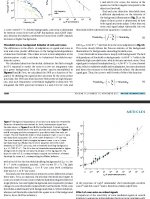"8x32 or 8x42 ?" is two questions not one
Hello Dennis,
I would like to make the case that the vote you suggest is too simple ... that your original post in fact asks TWO questions, not one:
Back in 2002, when the Pussycat and I had enough money to buy one pair of alphas, we answered your first question by buying 8.5x42s. We live little more than 10 minutes drive from the New Forest, and the brighter view at dusk in woodland seemed more important than the ease with which 8x32s can be carried long distances.
Others will argue -- as you did in the OP -- that the undeniable benefits of the 8x32s in size and weight are the more important factor.
Still others will argue that 7x or 10x are better magnifications. 40 years ago, when I was in my 20s, my perception was that 10x40s allowed you to see more detail, even allowing for the greater shake. Now, in my 40s, I can see the value of low-shake 7x glasses.
Still others will argue that we should have split the money in two, and bought midrange 8x32s AND 8x42s, rather than one pair of alphas.
We cannot answer your second question. Our Swarovskis are so much better than either our budget Canon 8x32s or our standard-grade Nikon 10x50s that they are ALWAYS the glasses that are picked up first.
I suspect that those who have similar-grade 8x32s and 8x42s take the former when they have to walk a long way and the latter at dawn and dusk ... and that they will answer your second question according to which they pick up first in good light for birding near the car (and which they pick up with less reluctance when they have to walk a long way at dusk).
Later,
Dr Owl
----------------------------------
John Owlett, Southampton, UK
Long debated is the topic of what format 8x32 or 8x42 is the best for birding. With the new Zeiss 8x42 SF's only being available in 8x42 I have been asking myself if I could ever go back to an 8x42. I REALLY appreciate the size and weight of the 8x32 and I don't think the light grasp advantage of the 8x42 is really that important for mostly daylight birding. I think the Exit Aperture of the 8x32 at 4mm is really comfortable and is optimum and I don't feel the bigger Exit Aperture of the 8x42 at 5mm is really that beneficial. Overall I feel the 8x32 is a better birding binocular. What do you think? Do you prefer an 8x32 or an 8x42 for birding? Your opinion could cost me $2500 if I decide I want the Zeiss SF so be careful!
Let's have a vote. Vote for the 8x32 or 8x42 for your favorite birding format.
Hello Dennis,
I would like to make the case that the vote you suggest is too simple ... that your original post in fact asks TWO questions, not one:
- If you could have only one pair of glasses for birding, would you choose 8x32 or 8x42?
- If you had two pairs of birding glasses, of similar quality, one pair 8x32, one pair 8x42, which would you use more often?
Back in 2002, when the Pussycat and I had enough money to buy one pair of alphas, we answered your first question by buying 8.5x42s. We live little more than 10 minutes drive from the New Forest, and the brighter view at dusk in woodland seemed more important than the ease with which 8x32s can be carried long distances.
Others will argue -- as you did in the OP -- that the undeniable benefits of the 8x32s in size and weight are the more important factor.
Still others will argue that 7x or 10x are better magnifications. 40 years ago, when I was in my 20s, my perception was that 10x40s allowed you to see more detail, even allowing for the greater shake. Now, in my 40s, I can see the value of low-shake 7x glasses.
Still others will argue that we should have split the money in two, and bought midrange 8x32s AND 8x42s, rather than one pair of alphas.
We cannot answer your second question. Our Swarovskis are so much better than either our budget Canon 8x32s or our standard-grade Nikon 10x50s that they are ALWAYS the glasses that are picked up first.
I suspect that those who have similar-grade 8x32s and 8x42s take the former when they have to walk a long way and the latter at dawn and dusk ... and that they will answer your second question according to which they pick up first in good light for birding near the car (and which they pick up with less reluctance when they have to walk a long way at dusk).
Later,
Dr Owl
----------------------------------
John Owlett, Southampton, UK





